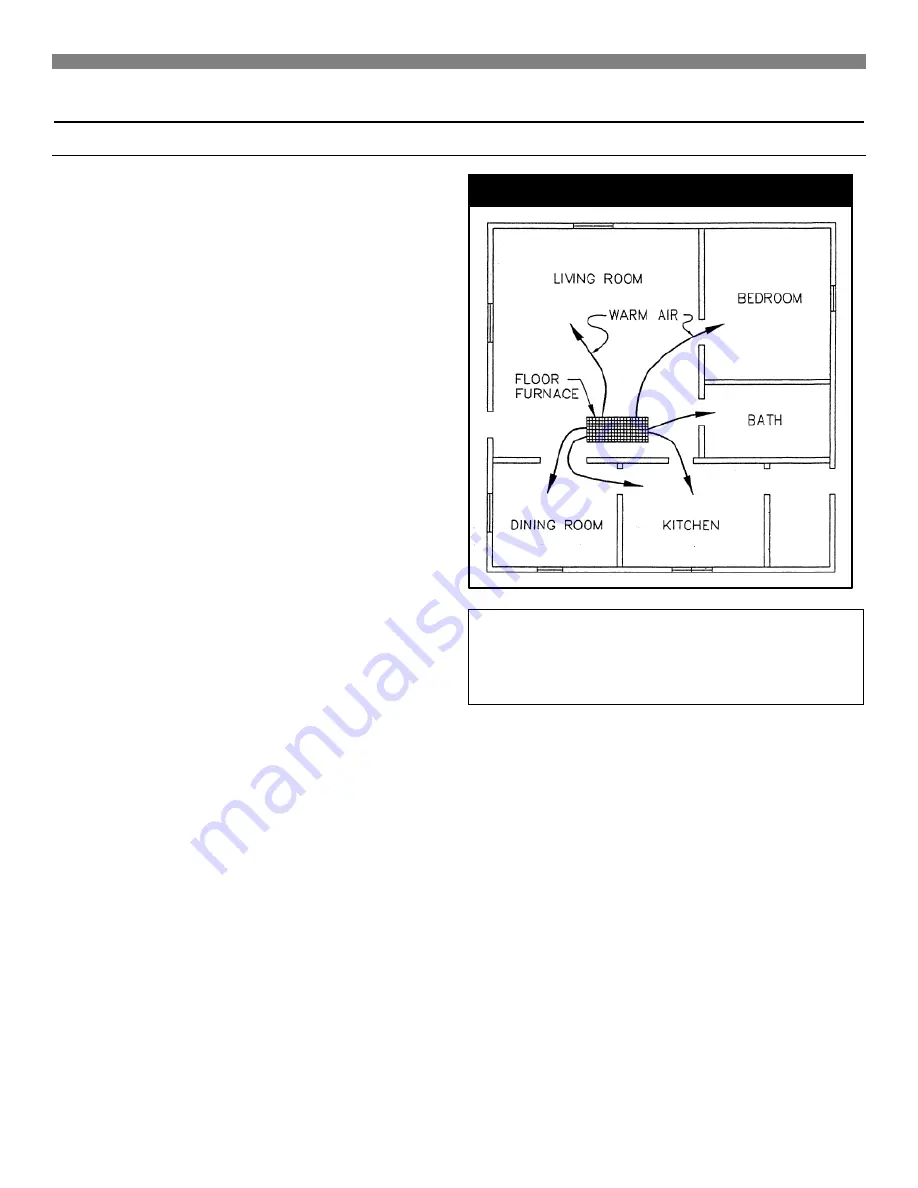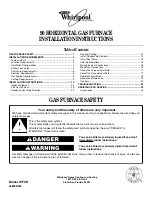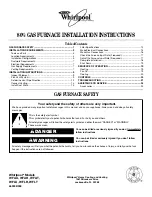
Installing Your Furnace
Locating the Furnace
Consider the following points before attempting to install the
furnace:
1. To achieve the best results from this furnace, it must be
located in an area that will provide good circulation of air to
adjacent areas that need to be heated.
2. Warm air will rise from the furnace and travel to other areas
only through open doorways, and that air must return to the
furnace to be reheated.
3. In small homes, one unit centrally located may be sufficient to
meet the heating requirements, but it is impractical to attempt
to use this furnace where heat must travel through more than
one doorway before reaching an area where heat is desired.
A typical installation of a single unit in a small home is shown
by Figure 2.
4. In larger homes, it may be necessary to use two or more
units to provide sufficient heat distribution. It is often better to
use two small furnaces rather than one large one.
5. If there is a difference in the floor level between two rooms to
be heated, the furnace should be located in a room with the
lower floor.
6. The flow of heat to various areas within the home can be
effectively regulated by the opening and closing of doors.
CLEARANCES
1. Minimum clearance between the floor furnace and adjacent
walls - 6".
2. Minimum clearance between furnace and doors, draperies or
other combustible materials within the home -12".
3. Minimum space required along two sides of the furnace to
allow persons to walk around the furnace - 15".
The thermostat should be located on an interior wall far enough
away from the furnace to prevent it from being heated directly by
the furnace. Select a location in the area most frequently used or
best situated to control the temperature of the entire house. Avoid
locations where the thermostat might be subjected to drafts from
windows, doors, stairways, etc., or from other devices such as
cooking ranges, fireplaces, television, etc. Place the thermostat
about five (5) feet above the floor. Do not select a location that will
require more than 25 feet of wire between the furnace and the
thermostat. Do not install the thermostat in an area which can be
isolated from the furnace by a door.
LOCATION NOTE:
Replacement floor furnaces of
the same or lesser Btu/hr. input rating may be
installed in the same location as the replaced
furnace when such replacement does not create an
unsafe condition.
After you have selected a location that will provide the necessary
clearances and air circulation, check beneath the house to be
sure that the clearances between the furnace and the ground, as
specified by Page 6, Figure 1, can be obtained. It is permissable
to dig a shallow pit, as shown in Figure 1, but a pipe or trench
should be provided to drain away any water that may seep into
the pit. If the depth of the pit must exceed 12", or if water seepage
is likely, a watertight pit of galvanized steel, copper, concrete or
other suitable material should be constructed and anchored into
place to prevent it from floating. The sides of this pan should
extend four inches above the ground. The clearances between
the upper rim of the pan and the furnace should be no less than
those specified in Figure 1.
The width, length and depth of each furnace model is shown in
Page 10, Figure 6.
FIGURE 2 Centrally Located Furnace
1/8 IN NPT PLUGGED
HOLE FOR TEST
GUAGE






































